8 Styling Ideas for Indoor Plant Shelves
Shelves are one of the core houseplant styling configurations. They hold tremendous potential in creating a coherent design narrative in a space, without taking up space! By learning what factors influence plant growth, you can make beautiful compositions that reveal a story over time. Let’s look at the 8 top ideas and design tips to work with.
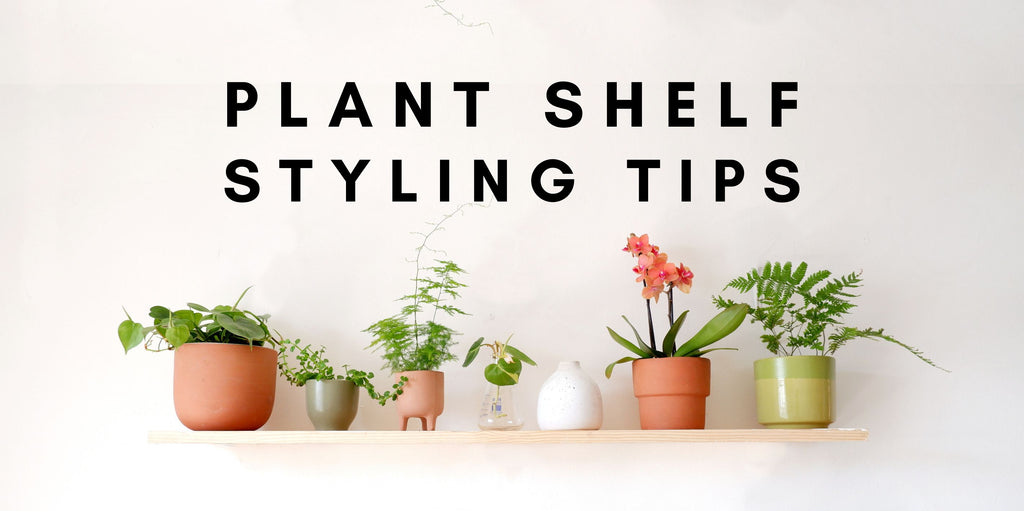
1. Sizing
Playing with size is one of the easiest design elements you can use in your decor to create drama, visual interest and to help the viewer read the room easier. You can use size to create focal points on a shelf or room, highlight your favourite plant, or simply as a practical tool to ensure that all your plants are getting correct light exposure (while still looking cute!).
TOP TIP: If you are using decorative pot covers in the same colour, switching up the sizes breaks the monotony of everything being at the same level BUT still retains cohesivity. If your shelf doesn’t have too much room for larger pots, go small or use a different shaped pot, as the varied shapes will create an illusion of size changes. E.g Terracotta Moon Planters matched with Terracotta Flo Planters.
You can also use a pot stand to raise up a pot that is the same size to add elevation and, therefore, height variance.
Some of our favourite sizing tricks include:
- Using smaller plants in front of larger plants to break the solid colour of a large pot and to prevent a smaller plant getting lost in the jungle.
- Placing plants that trail down in front of plants that are upright growing so that the leaves are kept separate and don’t compete with each other. This helps your eye travel up the entire length of the composition, which adds ‘height’ to your shelf.
- Using small plants on small shelves to maintain scale but add that pop of green!
- If you have larger shelves with more space, carefully combine plants in a range of sizes from tiny to large, and pay attention to their growing habits (upright or trailing, bushy or low-lying) as the shape of the plant contributes to their overall size.
- Add new shapes to the look with plant art, propagation glassware, or even utilising the wall space behind a shelf for mounted planters and Vases.
- Lastly, if you are working with a floor standing shelf, consider the floor the final shelf and use it to your advantage. Place your large statement plants, just to the side and in front of a plant shelf and it’ll immediately ‘frame’ your collection.

2. Statement Piece
Adding a statement piece is a clever way to add interest and contrast. It also helps the viewer read your plant shelf assemblage better, by encouraging them to naturally start on the statement piece, before following your narrative from there.
Typically, a statement piece is the largest plant amongst others, e.g. a large trailing Pothos, or well established Philodendron Rojo Congo. A statement piece can also center around rarity, something that folks don’t usually see - the unusualness catching the eye, e.g. an Anthurium Clarinervium or rare Philodendron Tortum.
Statement Pieces work especially well if you don't have many plants - they will command the attention in the absence of detractors.
If however you want to add a statement plant to an existing jungled shelf, consider moving it off to the side of the shelf so it stands out there. This amplifies the space around that special plant to make it visually “stand out” by creating a visual pause.
Be mindful of the context in which you place a plant. A plant with striking foliage, such as a Calathea Makoyana, high on a shelf, will be a waste, as it needs to be appreciated “top down” to appreciate its beauty..
Top Tip: Add some lighting, or consider how the lights and shadows move in the space, to create some extra drama with your statement piece. Or edit your shelf to make it stand out more… #lessismore

3. Growing Habit
There are two main types of plant growth: trailing (or cascading) and climbing. Shelving lets you raise the vertical axis, while placing plants along the parallel horizontal axis makes for interesting intersections.
Always remember at what height you will be viewing a plant at. For the high shelves trailing plants are king as they cascade downwards creating a waterfall of leaves, not only adding a super lush look to your shelf, but also drawing the eye in a downward fashion towards the rest of the shelves (if you have a few) or whatever you have positioned below the shelf, e.g a sofa, bed or framed art.
For shelves that are lower down, you can consider plants that are better viewed straight on, so that their personalities are not lost to the highest shelf. This would apply to ‘strong trailers’ such as Heart Leaf Philodendron or Golden Pothos.
One top tip to mention here: Be sure to know the fertilizing basics, as this is important to get lush and full. wouldn’t want to miss the opportunity for lushness after all your design efforts. For more of how to fertilize read our blog: Guide to Fertilizing Houseplants.

4. Colour
Plants go with any interior decor! But you will find that greens come in all different shades and "temperatures." Stick with us here. Cooler greens have more of a blue-green tone, while warmer greens tend to be more yellow-green. Using this knowledge, consider the temperature of the environment: you can match by creating a warm + warm, or cool + cool assemblage, or contrast temperatures by creating a warm + cool assemblage.
To make your plants stand out from each other (if you have a lot), try to place them so that their leaves contrast each other in pattern, size, and colour. You can place two plain green leaf plants beside a variegated one, or break up the green with pink, dotty, or striped leaves.
While green plants are the epitome of that jungle look and feel, many plant collectors enjoy collecting plants that feature interesting coloured foliage, e.g. pink, red, orange, and even black, patterning on the foliage such as stripes, spots, or speckles; and of course, flowering plants. Adding a few of these plants to your display is an excellent technique for creating a focal point on your shelf, even if you have just one statement plant. Or broader visual stimulation, if you have many different coloured and patterned plants.
Finally, another design trick is to make more out of less. You can do that by bulking up one type of plant or a range of very similar coloured or sized plants. You can create a faux green wall if you repeat a few of these plants close together. Top choices here are the Heart Leaf Philodendron and Philodendron Brasil - vigorous, full, uncomplicated growers.

5. Texture
Consider the shape of the foliage, the colour of the stems, and how the plant will grow over time - will it stay relatively the same size or get bigger? E.g. Pothos and Trailing Philodendrons have a tendency to increase their leaf size x12 or more, as they start climbing.
The eye reads texture similarly to color, size and shape in the sense that it contributes or detracts from the composition that’s created.
Keep plant textures in mind when grouping plants together. Pair different sized leaves in order for the eye to ‘read’ the grouping better. If you have two very ‘busy’ plants up against each other, they will get lost. Visually, they will read them as one ‘big mess’ of leaves. e.g. pairing a Palm with an Umbrella Plant reads similarly. However, the contrast between the large Fiddle Leaf Fig leaves and the slender parlor palm foliage is enticing.

Texture does not only relate to the plant choice. It also relates to the composition - the overall patterning that is created by the various pieces used. Which in turn is also influenced by the complementary materials that you’ve chosen - trinkets, Decor Pieces such as Terrariums, and of course planters.
Baskets will add softness, as will Cotton Cord Baskets or other soft pots. Ceramic Pots can be both sleek and modern, and warm and homely. Choosing the finish of your glaze is important (raw, matte or gloss) and considering mixing up different textures across pots and or baskets creates a very different visual narrative.
6. Planters
Consider the size, shape, and colour of planters when arranging them on a shelf. Be mindful of the material, age and detail, as further design elements to consider when creating your plant shelf assemblage.
For offices or commercial spaces, matching pots are often preferred for their calmness in regularity, and cohesiveness across the area. However, in the home, or in quirky coffee shops, it is much more common to play with different colours and textures, on the same shelf, in the same room or across several rooms. Let's explore some key planter design elements:
Work with Complementary Colours
Go bold by combining colours that contrast well together, e.g. yellow & blue, red & green, pink & green or mustard and teal. Alternatively, keep it ‘neutral’ and pair pots together in the same colour group: shades of blue, creams, pinks and peaches, greys and blacks.

Ground with Classic Terracotta
A timeless, planter choice that will never go out of fashion. Play with different shapes within this material, e.g. Flo planter and Moon Planters, or Classic Italian Terracotta.

Play by Repeating a Design Element
Consider repeating the same planter, to ground a certain look, whilst playing with textures, sizes and colours of the plants. An example might be Flo Planter in different sizes. Or a similar shape in different finishes, e.g. Moon Pink + Pluto White.

Or choose different pots, but in very similar colours as this will create a subtle variance: Sage Flo, Sage Pluto and Mint Emerson.
Explore different Textures
Vary planter textures by playing with Palm Leaf Baskets, Cotton Cord Baskets or soft pots. Be mindful of the 3 core types of ceramic finishes: Raw and unglazed, Matte and Gloss, or a mix of these, e.g Pluto Planters.

Mixing New and Heirloom Planters adds additional time and sentimental texture. But be mindful of balancing these elements too - a quirky vintage piece adds nuance, but overdoing it can be stuffy.
When choosing a planter, give thought to the height of the shelf and how you will care for the plant. A high shelf may be better suited for a ceramic planter without drainage, allowing you to water in situ without an accidental excess water mess.
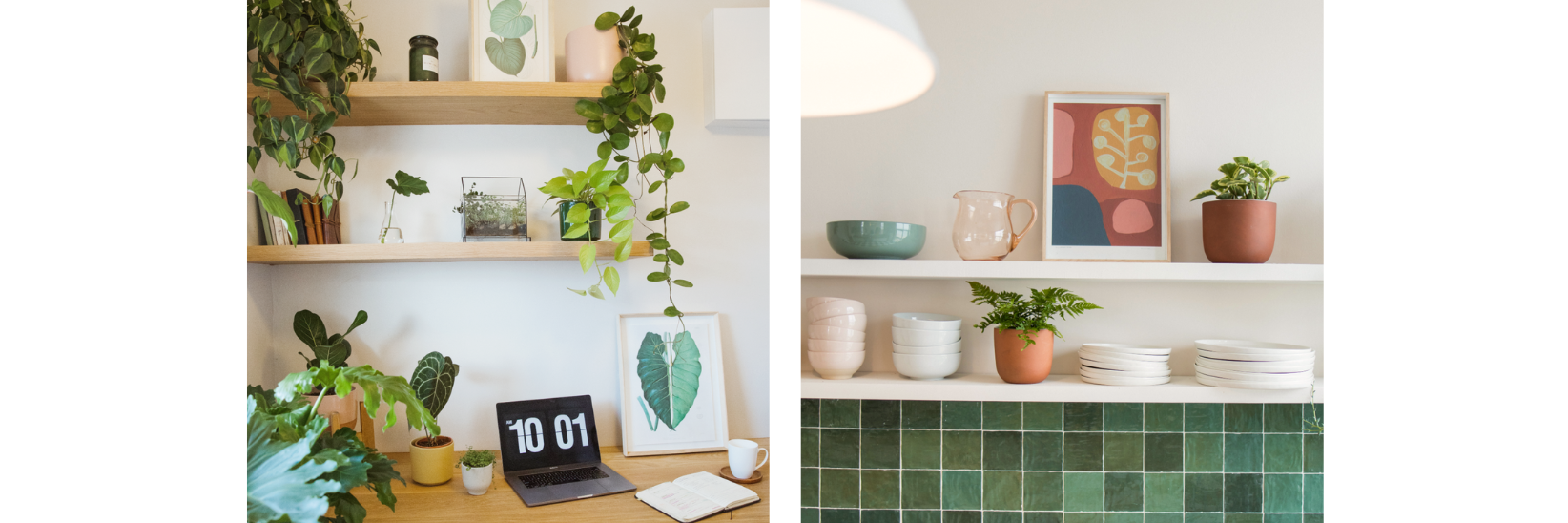
7. Botanical Décor
Consider using botanical themed decor pieces to deepen your jungle look without necessarily adding more plants to the mix. This is the ultimate hack to adding more jungle to your decor without increasing the time needed for plant care. By placing pressed foliage and flowers, vintage botanical drawings or other nature-inspired artwork on the walls of your home or office, you are able to finish up your green look in a very ‘on-theme’ manner. Try layering art and plants on a shelf or sideboard; use propagation vases with little cuttings in them in front of, or next to framed art for a little bit of glass play and to show off your green fingers. Consider adding the same plant in different forms, e.g. a pressed philodendron leaf or botanical drawing of a philodendron paired with a real life philodendron in a decorative pot or mini cutting in a vase.
(Read up more on 3 Methods to Propagate Succulents and 5 Easy House Plants to Propagate.)

BONUS: Why not add a sleek watering can or plant mister to the mix - not only does it match the theme, it also makes plant care a little bit easier..
8. Balance
You’ve looked at all the key design elements, exploring size, texture, planters amongst others. The final aspect in arranging your plant shelf is Balance - the way in which everything comes together. Explore Balance by considering the design elements of symmetry and irregularity.
Symmetry
Is pleasing to the eye, creates calm and visual order. Generally, this is achieved with even numbers. You could cluster groups of 2, 4, 6 plants together. Or use plants to frame an object, e.g. a Television or piece of art.

Irregularity
Offers a sense of dynamism, the scene isn’t static. This creates interest for the eye, and is achieved by using odd numbers, e.g. creating a forest scene with a mix of various sized plants.
Symmetry and Irregularly relate to the number of plants. But consider balance as it relates to patterns, size and texture too. E.g. you could have small-large-small or large-large of the same variety. No right or wrong, just what feels good. Pause, assess, adjust.
Remember that trailing plants will hide the shelf as they grow so either drape to the side or the shelf or adjust your design. In fact, as all your plants grow and take up room in their own ways you will need to continually reevaluate whether the look still works.
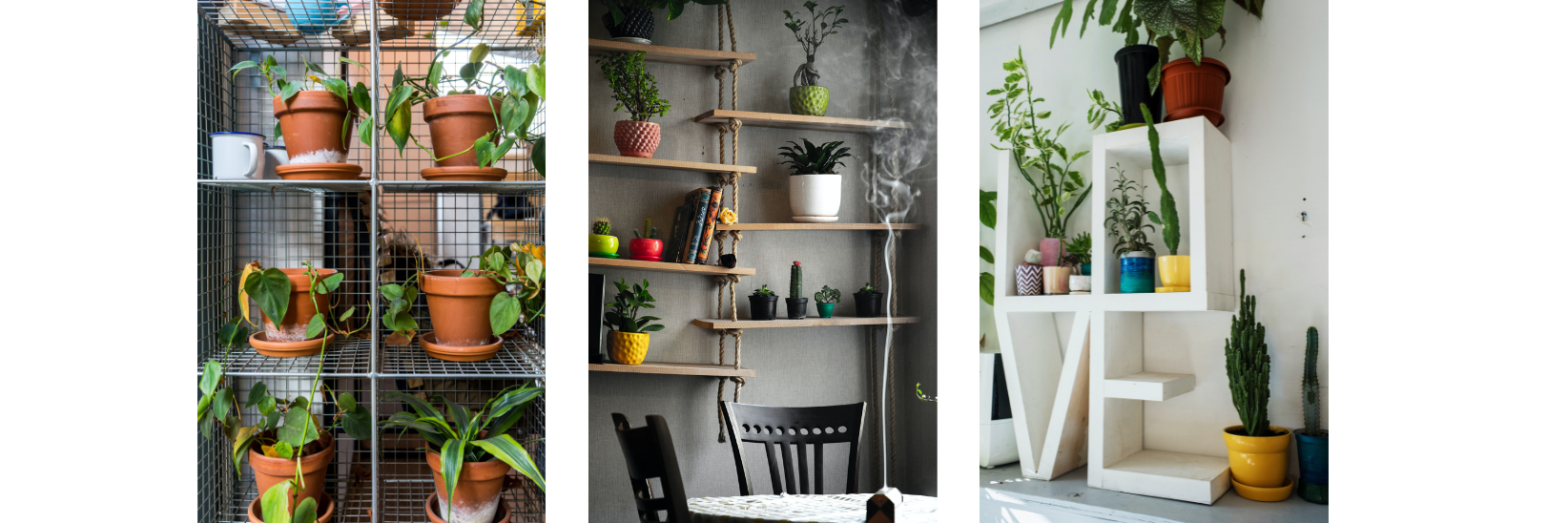
Play! This is fun! Place your plants on the shelves and move them around until it settles, it feels design-pleasing - that strange comfort that comes about when a creative outcome just feels good.





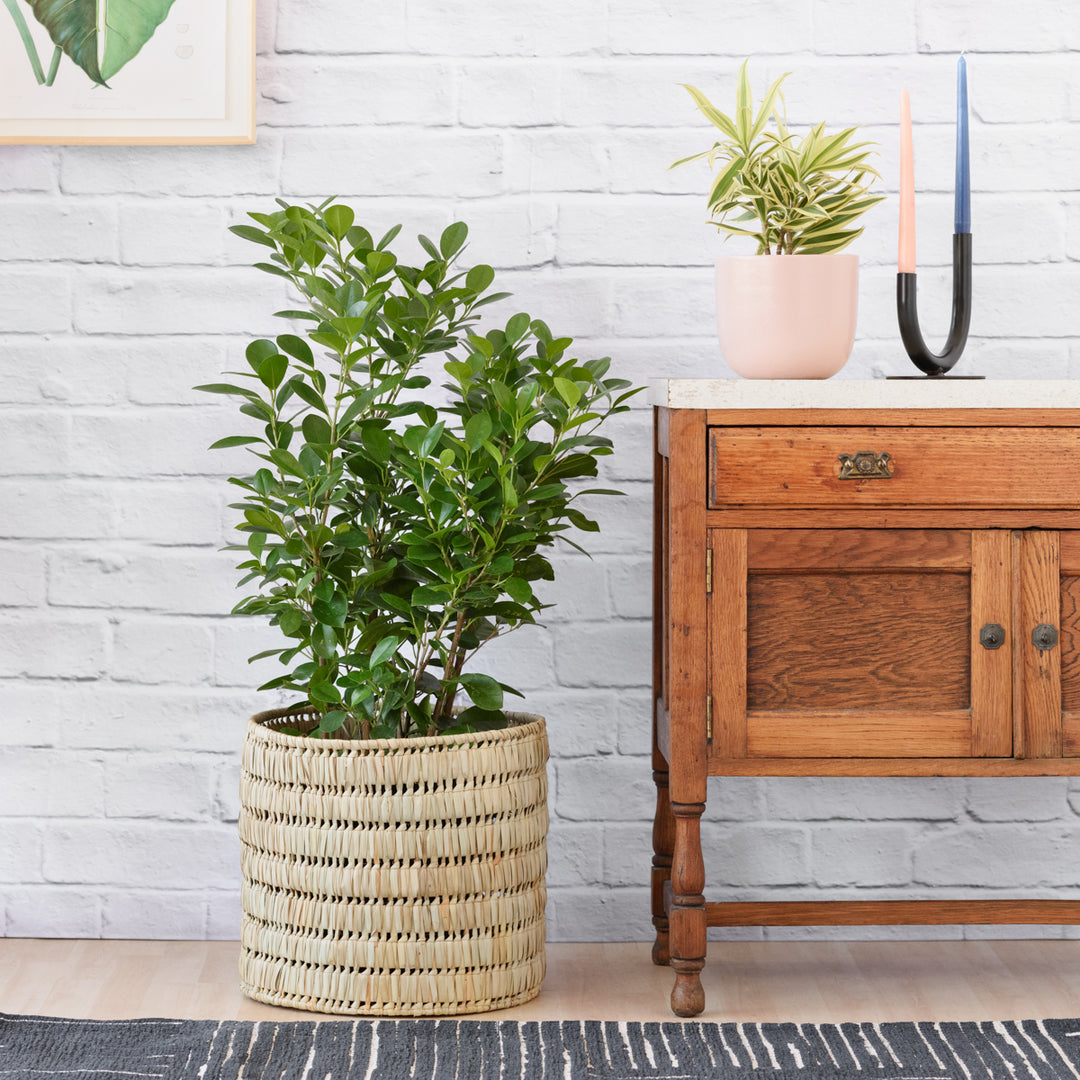
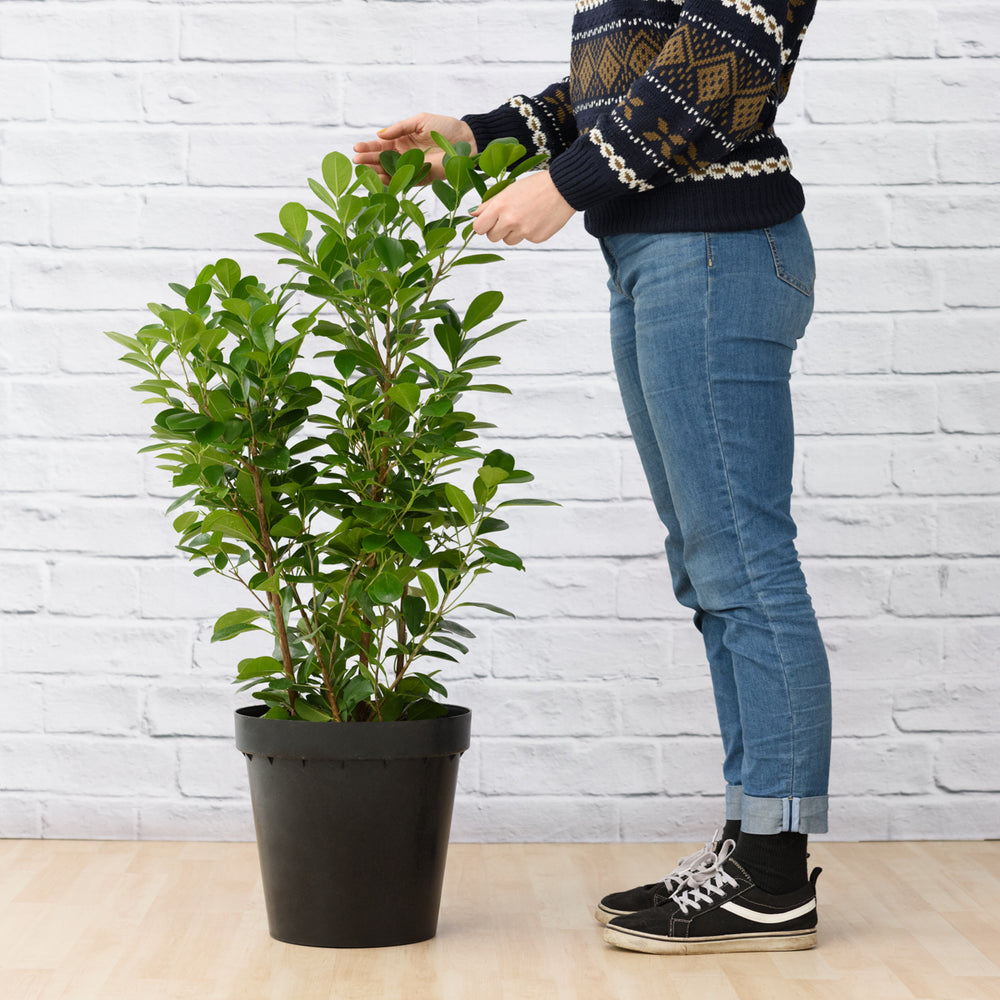
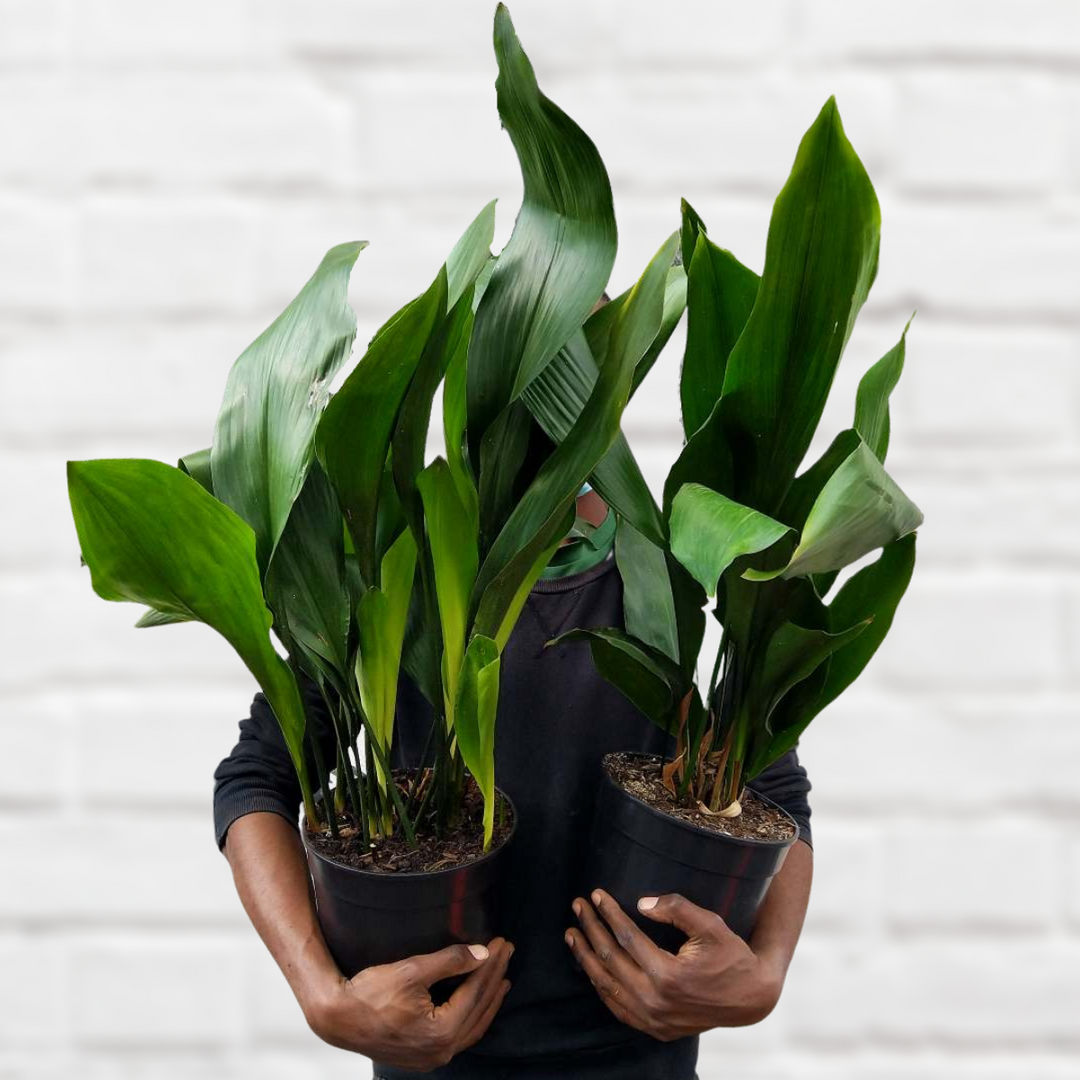
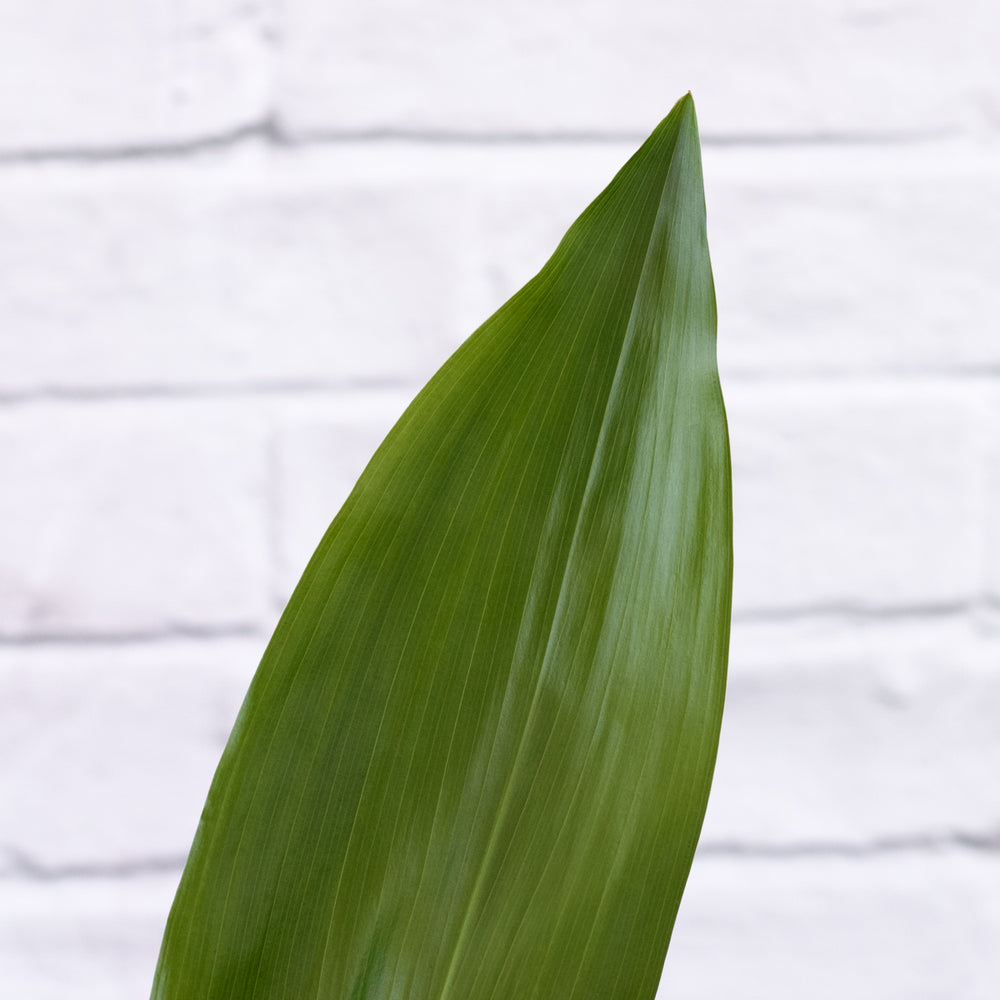
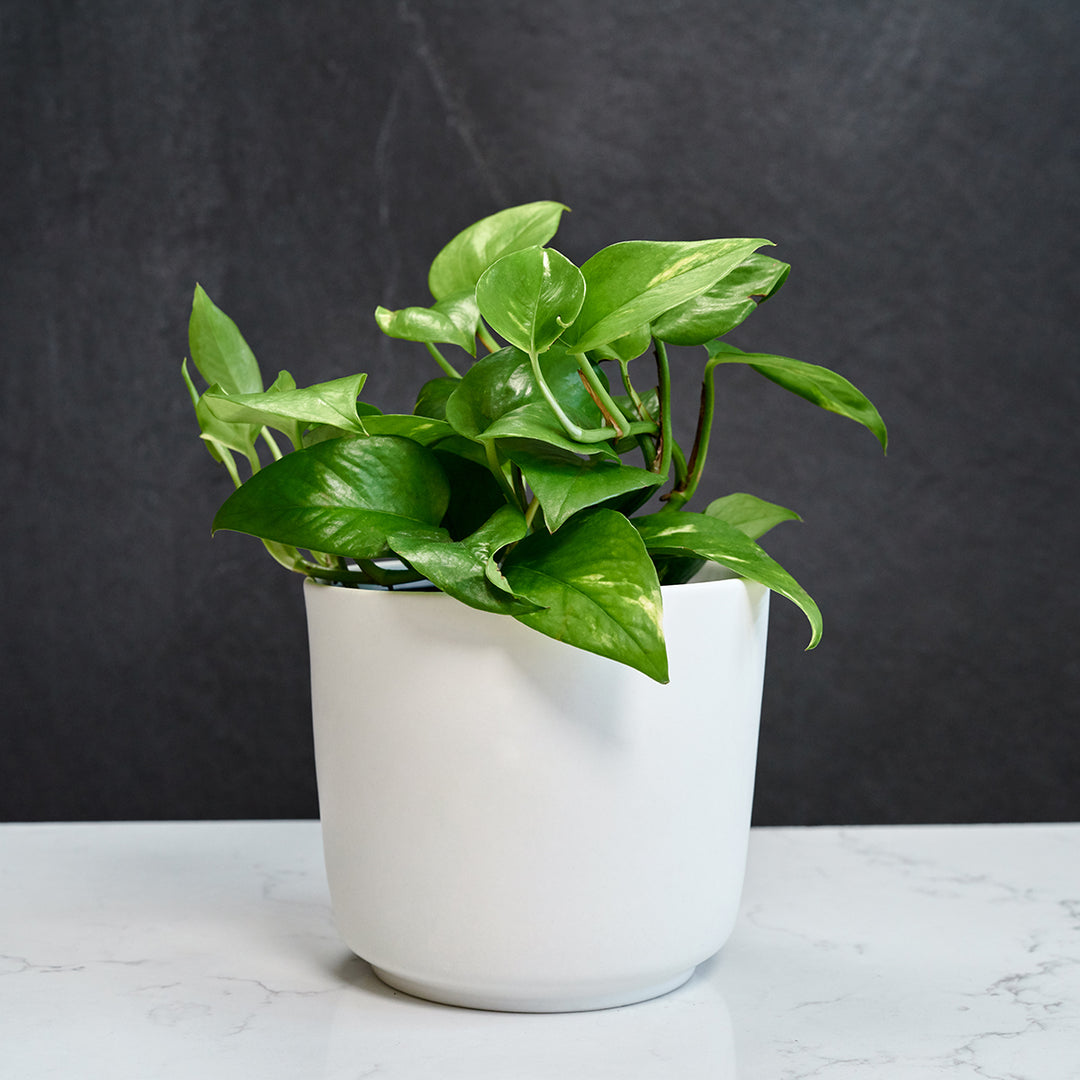
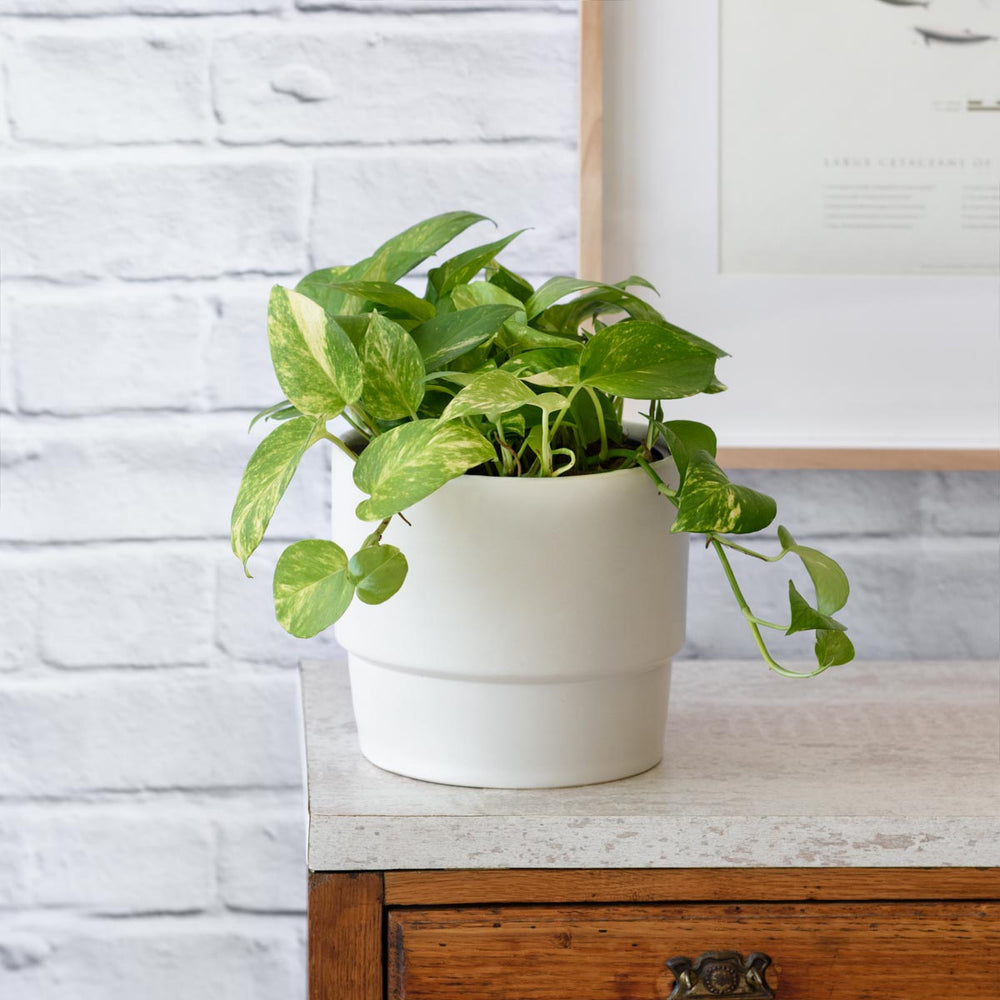
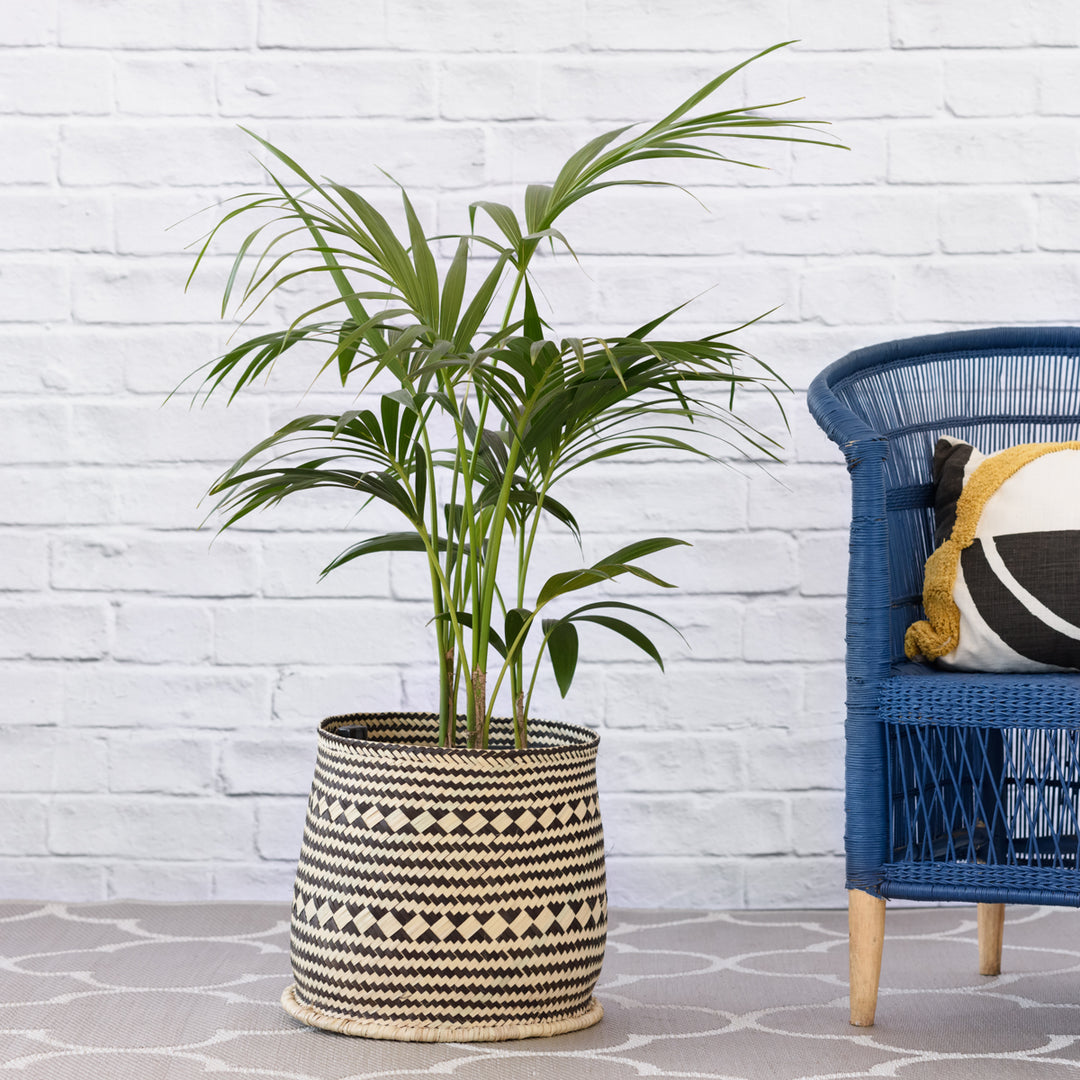
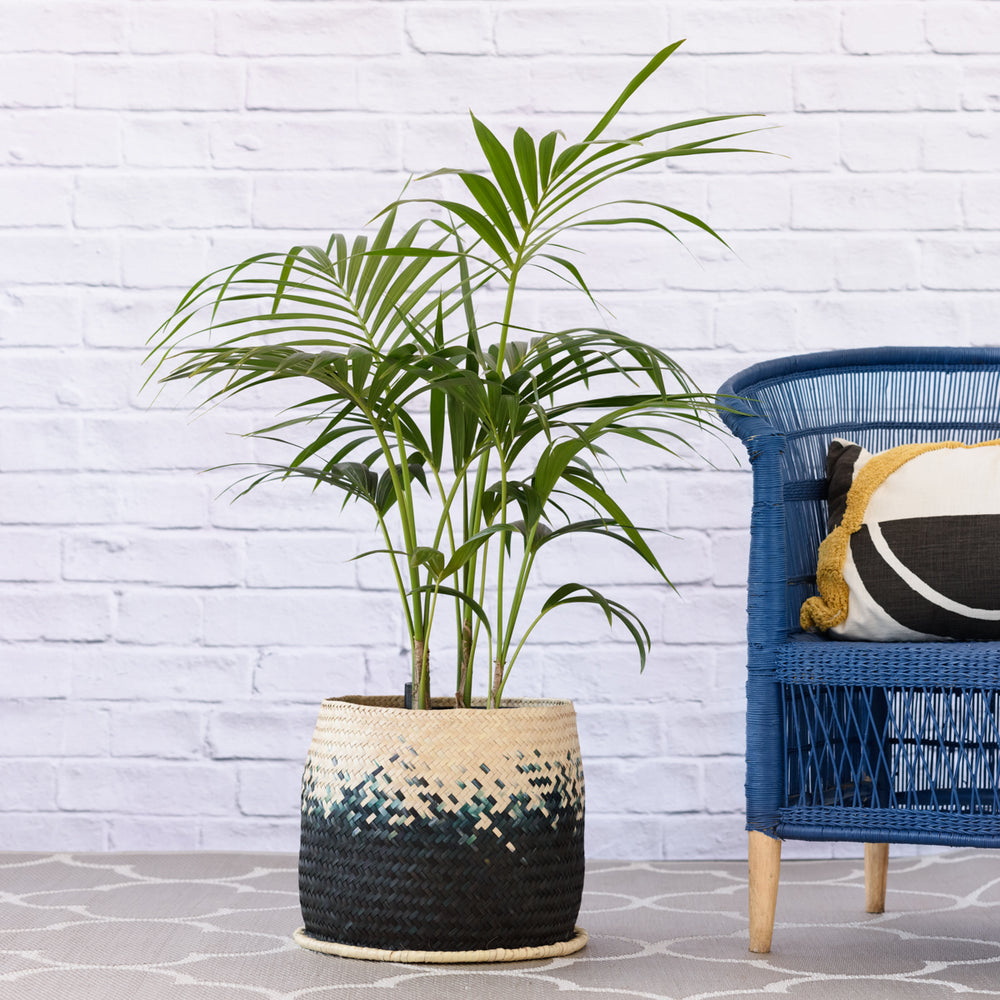
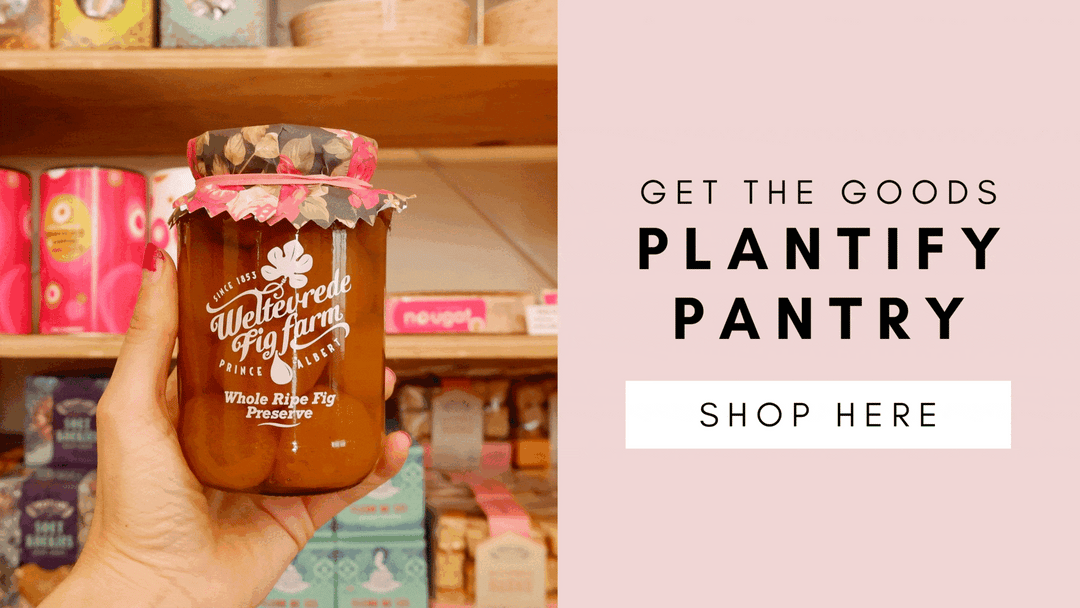
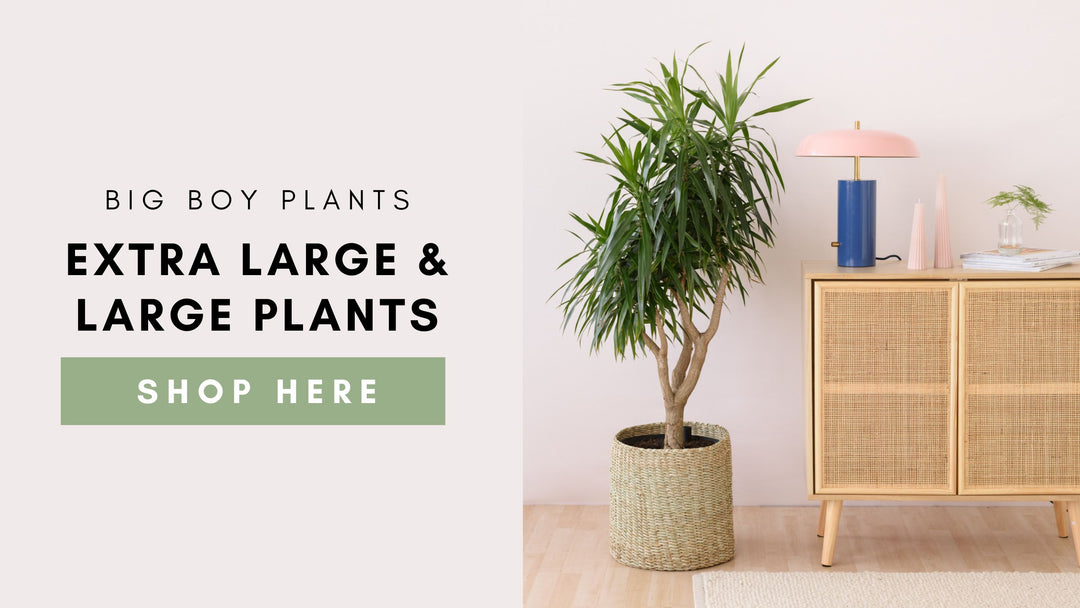
Leave a comment